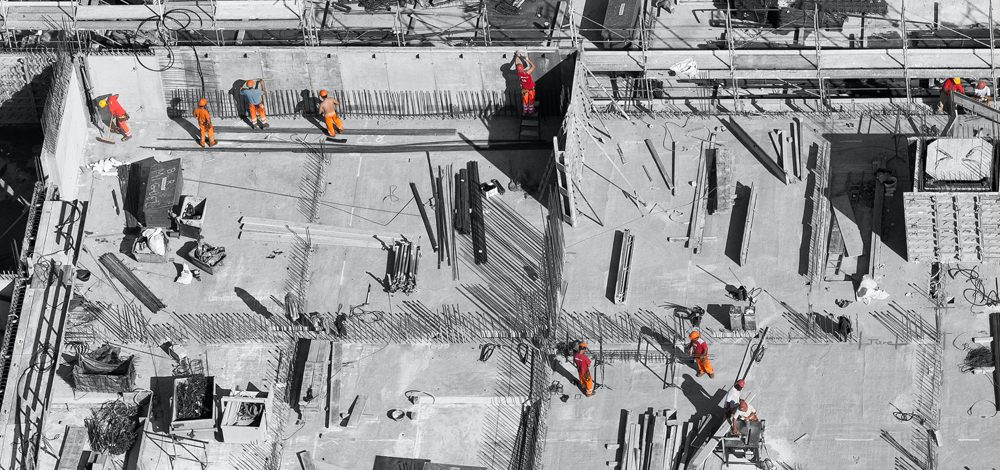Most of the built environment around us has been created from a relatively small palette of traditional materials: brick, concrete, steel, timber and glass; and in our roads: asphalt and bitumen, or again concrete (both containing stone aggregates).
This can be cited as further material evidence of the construction and civil engineering sector’s entrenched conservatism and design codes; notwithstanding improvements to traditional materials – such as polymers and other additives that make road surfacing thinner, more durable and quieter, and lighter or faster-setting concrete.
In a world that’s using up resources at an unsustainable rate, and belatedly facing up to the daunting challenge of decarbonising society, a wider array of re-engineered and break-through materials is needed.
Technological leaps – sometimes from other sectors – have resulted in smarter construction materials and radical change. A sector that embraces the waves of innovation unleashed by BIM and digitalisation is more open to new and emerging products – provided they are backed by whole-life and sustainability data that also convinces clients and regulators of their benefits.
Old materials, new approaches
A lot of work has been done incorporating waste products into building materials such as asphalt and concrete – to close the resource loop, at least partially, and to replace virgin and/or more expensive elements such as stone aggregates. Crushed glass, shredded rubber tyres, oyster shells and pulverised fuel ash from incinerators are examples.
Innovations can also take familiar materials and combine them in new ways. Cross-laminated timber (CLT), for example, achieves greater multi-directional strength than natural wood by sandwiching layers at right angles to each other. More UK developments are availing of CLT’s advantages – design flexibility (extending to multi-storey ‘plyscrapers’), lightness and thermal insulation properties. Its biggest boost may come from its suitability to various prefabrication building systems.
An environmental consideration
Concrete is one of the most versatile and universal building materials. Just as lightweight and self-compacting concrete mixes have been designed for particular applications, if sparingly used, new formulas are being and will be developed. Whether the benefits are financial, performance-related or environmental, they need to be significant to drive adoption. But the commitment to net zero carbon emissions is bound to spur interest in new (and sometimes not-so-new) alternatives. Replacing Portland cement would be a huge leap given the environmental impact of its extraction and processing. Instead, geopolymer concrete – sometimes called ‘green’ concrete – uses fly-ash (a substance that, like the volcanic ash used to long-lasting effect in Roman concrete, can lend strength and durability). Lendlease has won green plaudits, not least for specifying geopolymer concrete in its Trafalgar Place development in London, along with other more sustainable alternatives such as CLT.
Laing O’Rourke is one of the contractors that have pioneered use of zero-cement concrete. One version, Cemfree, is said to save 80% of embedded carbon compared with traditional mixes.
Filling in the cracks
Self-healing concrete represents another order of innovation many considered fantastical. Backed by grant aid from the Engineering and Physical Sciences Research Council, the Resilient Materials 4 Life (RM4L) programme is exploring this and other adaptable and sustainable construction materials.
Success would have significant financial as well as environmental implications. Every year £1bn is allocated for maintaining and repairing damage to the UK’s infrastructure. Costain has also backed the RM4L research, and in 2015 constructed five sections of concrete retaining wall on the A465 Heads of the Valley upgrade in Wales to test several self-healing systems.
Self-healing bio-concrete is made with microcapsules in the mix that contain bacteria and an organic nutrient (calcium lactate). When cracks occur and water penetrates, it activates the bacteria, which feed and secrete calcite (limestone), filling the cracks. Microbiologists at Delft University developed and patented a self-healing concrete, now marketed as Basilisk. Used as an additive for new-build, a spray or a repair mortar, it cures cracks up to 0.8mm; further development is ongoing.
The ultimate circular solution would be to trap CO2 and turn it into a building material. Start-up Cambridge Carbon Capture has received Innovate UK grants to begin scaling CO2LOC technology that replaces concrete fillers, blocks, tiles and plasterboard.
Drawing from Industry 4.0
Technologies emerging, and merging, as part of Industry 4.0 – the so-called fourth industrial revolution – could accelerate development of a raft of new and composite materials that promise to be lighter, stronger and more sustainable.
These may exploit nanotech – tiny particles that turn the traditional steel or concrete into “smart” materials able to measure their stress state, deformation, risk of failure or incorporate other useful characteristics.
Harnessing artificial intelligence and 3D printing as well could spawn a new generation of superior materials based on natural evolution. Construction and civil engineering may have to adapt discoveries made in other sectors. AI helped Airbus use ‘generative design’ software to test millions of metal alloy configurations inspired by slime mould and mammal bones. Its 3D-printed ‘bionic’ partition has optimal strength and lightness for future jetliners.
Predating Industry 4.0, graphene – the wonder material that won the 2010 Nobel Prize in physics for researchers at Manchester University – has countless applications across industries. A single layer of carbon atoms could form a perfect barrier in buildings and infrastructure: from a rustproof coating for steel to membranes that filter water pollution or absorb carbon dioxide. An early application is in paint.
Highways England earlier this year linked up with the Graphene Engineering Innovation Centre to explore how the disruptive technology could extend asset life and raise the network’s performance to “an industry-changing level”.
It followed the award of £23m government money to research projects aiming to future-proof UK roads. These Live Labs projects demonstrate a range of new technologies in local authority areas. Trials include ‘Power Road’ technology, piloted in France, using geothermal energy to de-ice car parks and bus stations; embedded sensors to target highway maintenance more efficiently; and extending use of plastic as a surfacing material.
Materials research continues to develop
The research effort is ramping up. Much of the government-backed work is focusing on smarter design and use of materials within prefabrication systems. Said to be the government’s largest ever initiative in the sector, the Construction Innovation Hub was born out of the UK government’s Construction Sector Deal. It was launched in November 2018 with £72m from UK Research and Innovation’s Industrial Strategy Challenge. It has now announced the Platform Design Programme, an open call to firms to help develop a new ‘kit of parts’ to transform the sector.
The Hub is following the ‘Design for Manufacture and Assembly’ (DfMA) approach seen by government as key to modernising construction. A parallel initiative in Scotland – Advanced Manufacturing for Construction of Homes – aims to develop digital design tools, advance manufacturing, and improve near-to-market offsite systems.
Some contractors and supply chain partners are impatient for progress. Last year, Colmore Tang Construction teamed up with Virgin StartUp to launch their own construction technology accelerator programme. Called ConstruTech, this £10m fund is for innovative start-ups anywhere in the world with new solutions in the areas of people, data and smart materials that can improve construction’s productivity, sustainability and skills. “Other industries are much better at seeing the potential in technology and grasping opportunities to boost productivity and commercial gain,” Group CEO Andy Robinson declared. “Construction is falling behind and it’s having a negative impact on the sector, growing the divide between the traditional, ageing workforce and the young, technologically-advanced workforce that is choosing other industries over ours.”
For more trends in construction and civil engineering, download your copy of “Constructive change” here:

















No Comments